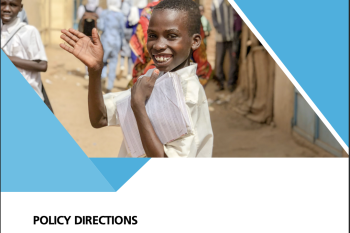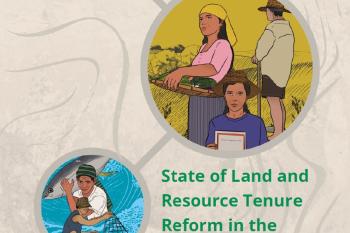Land rights and tenure security have far-reaching implications for sustainable development. Land is the source of livelihoods for women and men, households and communities around the world and provides economic and social security for present and future generations. Yet a large gender gap exists in land access, control and use, and women are being left behind. Consequently, securing access to land for all, particularly for women, is integral to the 2030 Agenda and multiple goals explicitly reference this importance. In light of this, Goal 1 on eliminating poverty, Goal 2 on food security, and Goal 5 on gender equality all call for women’s equality in relation to land.
However, increasing women’s land rights and tenure security is not straightforward nor easily achieved. It requires an understanding of the multiple and intersecting identities, contexts and circumstances that women have and live in. In the same vein, analyzing progress needs to reflect the multiple factors that contribute and may contribute to land access, use and control. The Global Land Tool Network (GLTN) and UN Women’s new publication,
Pathways for Secure and Equal Tenure for Women: Addressing Diversity – Scaling Progress, allows stakeholders to do just this. The publication presents a valuable and innovative initiative in which the diversity of women, the settings they live in and the corresponding variety of tenure risks and opportunities they face can be monitored and evaluated.
The objective of this new approach is to deepen the knowledge on women’s land rights, moving beyond binary terms (e.g., formal/informal), to broaden know-how and understanding of the different contexts in which women live. The publication proposes a “living” reference tool built on stakeholder collaboration to aggregate and organize gender-tenure patterns. Partners will then fill gaps based on needs identified and capitalize on opportunities to create new spaces and scale good practices. To further this progress, GLTN and UN Women outline the development of knowledge products and communities of practice, which will allow for joint advocacy and greater impact.
Indeed, moving the needle on women’s land rights and tenure security will require collaborative and novel approaches that address the diversity of women and their lived experiences. Despite recent efforts to increase women’s land rights and tenure security, only
13.8 percent of landholders in the world are women, giving evidence to the fact that simply continuing current practices will not lead us to reach gender parity and the Sustainable Development Goals. Pathways for Secure and Equal Tenure for Women enables action research and advocacy by focusing stakeholder attention on collaborative efforts, aggregating knowledge to promote real change for women. Through the path laid out by UN Women and GLTN, the potential is raised to leave no one, and no woman, behind.



